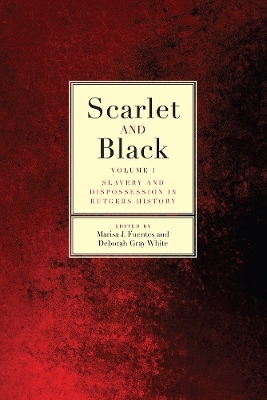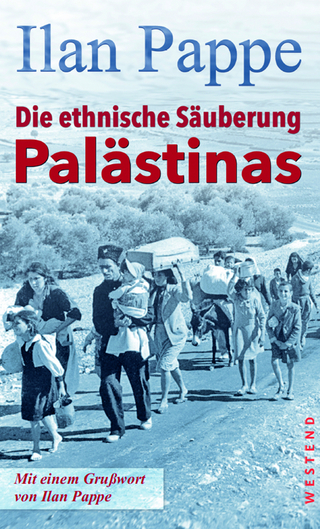
Scarlet and Black
Rutgers University Press (Verlag)
978-1-9788-1636-7 (ISBN)
- Titel z.Zt. nicht lieferbar
- Versandkostenfrei innerhalb Deutschlands
- Auch auf Rechnung
- Verfügbarkeit in der Filiale vor Ort prüfen
- Artikel merken
The 250th anniversary of the founding of Rutgers University is a perfect moment for the Rutgers community to reconcile its past, and acknowledge its role in the enslavement and debasement of African Americans and the disfranchisement and elimination of Native American people and culture.
Scarlet and Black documents the history of Rutgers’s connection to slavery, which was neither casual nor accidental—nor unusual. Like most early American colleges, Rutgers depended on slaves to build its campuses and serve its students and faculty; it depended on the sale of black people to fund its very existence. Men like John Henry Livingston, (Rutgers president from 1810–1824), the Reverend Philip Milledoler, (president of Rutgers from 1824–1840), Henry Rutgers, (trustee after whom the college is named), and Theodore Frelinghuysen, (Rutgers’s seventh president), were among the most ardent anti-abolitionists in the mid-Atlantic.
Scarlet and black are the colors Rutgers University uses to represent itself to the nation and world. They are the colors the athletes compete in, the graduates and administrators wear on celebratory occasions, and the colors that distinguish Rutgers from every other university in the United States. This book, however, uses these colors to signify something else: the blood that was spilled on the banks of the Raritan River by those dispossessed of their land and the bodies that labored unpaid and in bondage so that Rutgers could be built and sustained. The contributors to this volume offer this history as a usable one—not to tear down or weaken this very renowned, robust, and growing institution—but to strengthen it and help direct its course for the future.
The work of the Committee on Enslaved and Disenfranchised Population in Rutgers History.Visit the project's website at http://scarletandblack.rutgers.edu
MARISA J. FUENTES is an associate professor in women’s and gender studies and history at Rutgers University, New Brunswick, New Jersey. She is the author of Dispossessed Lives: Enslaved Women, Violence, and the Archive. DEBORAH GRAY WHITE is a Board of Governors Distinguished Professor of History at Rutgers University, New Brunswick. She is the author or editor of numerous books including, Ar’n’t I A Woman? Female Slaves in the Plantation South.
Foreword
Richard L. Edwards
Introduction: Scarlet and Black—A Reconciliation
Deborah Gray White
Chapter 1. “I Am Old and Weak . . . and You Are Young and Strong . . .”: The Intersecting Histories of Rutgers University and the Lenni Lenape
Camilla Townsend,with Ugonna Amaechi, Jacob Arnay, Shelby Berner, Lynn Biernacki, Vanessa Bodossian, Megan Brink, Joseph Cuzzolino, Melissa Deutsch, Emily Edelman, Esther Esquenazi, Brian Hagerty, Blaise Hode, Dana Jordan, Andrew Kim, Eric Knittel, Brianna Leider, Jessica MacDonald, Kathleen Margeotes, Anjelica Matcho, William Nisley, Elisheva Rosen, Ryan Von Sauers, Ethan Smith, Amanda Stein, and Chad Stewart
Chapter 2. Old Money: Rutgers University and the Political Economy of Slavery in New Jersey
Kendra Boyd, Miya Carey, and Christopher Blakely
Chapter 3. His Name Was Will: Remembering Enslaved Individuals in Rutgers History
Jesse Bayker, Christopher Blakley, and Kendra Boyd
Chapter 4. “I Hereby Bequeath . . .”: Excavating the Enslaved from the Wills of the Early Leaders of Queen’s College
Beatrice Adams and Miya Carey
Chapter 5. “And I Poor Slave Yet”: The Precarity of Black Life in New Brunswick, 1766–1835
Shaun Armstead, Brenann Sutter, Pamela Walker, and Caitlin Wiesner
Chapter 6. From the Classroom to the American Colonization Society: Making Race at Rutgers
Beatrice Adams, Tracey Johnson, Daniel Manuel, and Meagan Wierda
Chapter 7. Rutgers: A Land-Grant College in Native American History
Kaisha Esty
Epilogue: Scarlet in Black—On the Uses of History
Jomaira Salas Pujols
Acknowledgments
Notes
List of Contributors
| Erscheinungsdatum | 01.05.2020 |
|---|---|
| Co-Autor | Beatrice J. Adams, Shauni Armstead, Jesse Bayker |
| Zusatzinfo | 12 |
| Verlagsort | New Brunswick NJ |
| Sprache | englisch |
| Maße | 140 x 216 mm |
| Gewicht | 454 g |
| Themenwelt | Geisteswissenschaften ► Geschichte ► Regional- / Ländergeschichte |
| Geschichte ► Teilgebiete der Geschichte ► Kulturgeschichte | |
| Sozialwissenschaften ► Pädagogik ► Erwachsenenbildung | |
| Sozialwissenschaften ► Soziologie ► Makrosoziologie | |
| ISBN-10 | 1-9788-1636-7 / 1978816367 |
| ISBN-13 | 978-1-9788-1636-7 / 9781978816367 |
| Zustand | Neuware |
| Informationen gemäß Produktsicherheitsverordnung (GPSR) | |
| Haben Sie eine Frage zum Produkt? |
aus dem Bereich


